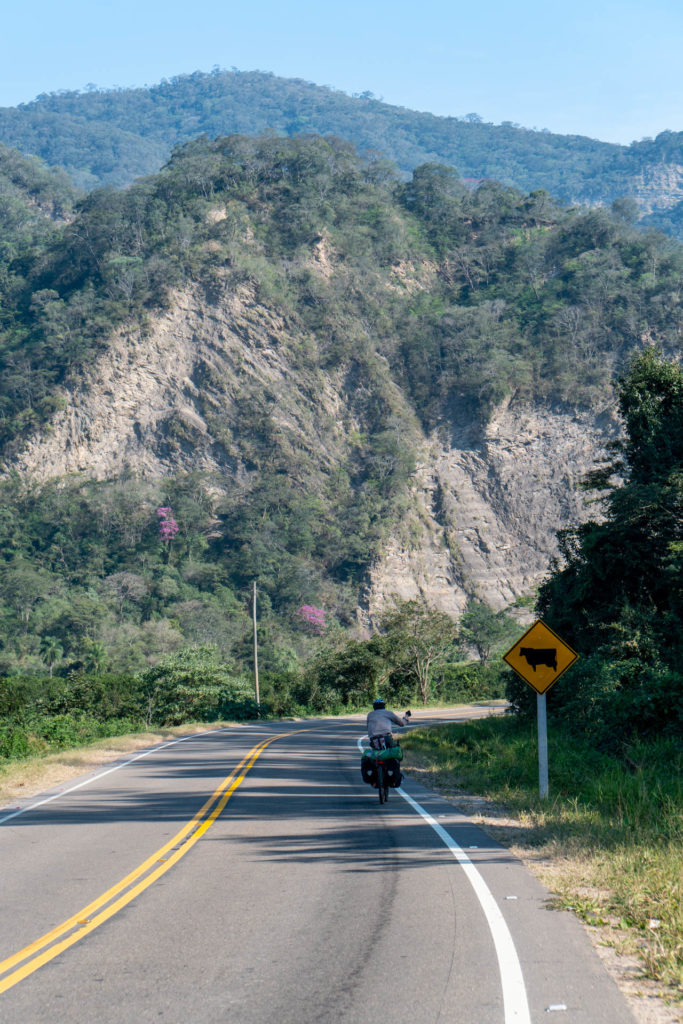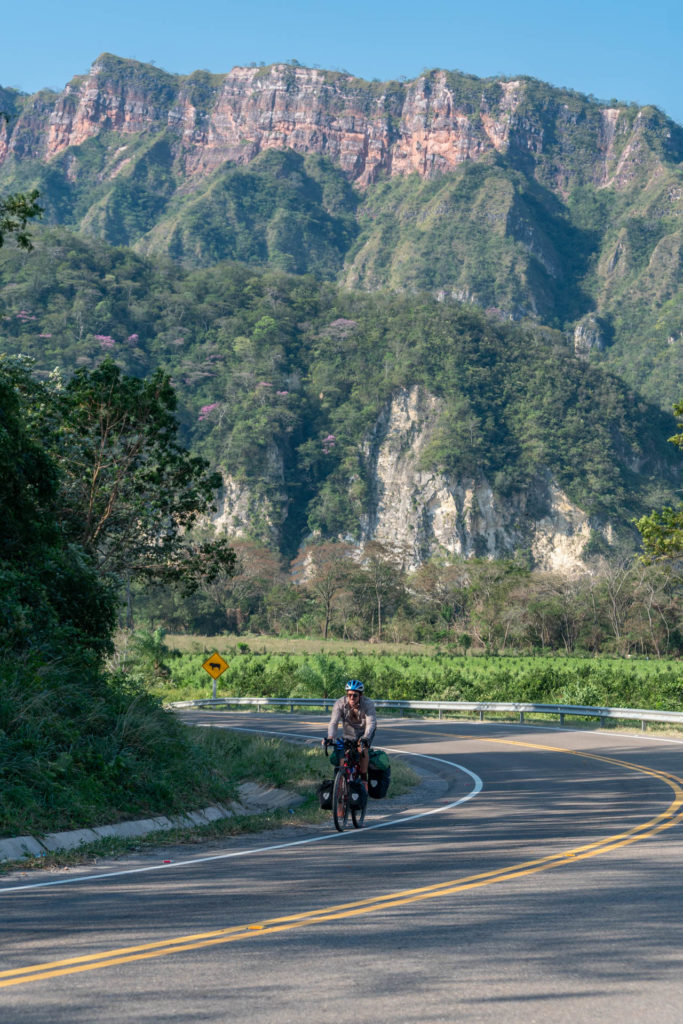To every story there is a beginning. The story of Pedalpaca begins at low altitude, just at rock throwing distance of the Cordillera de los Andes, in Santa Cruz de la Sierra, Bolivia. Santa Cruz represents what Bolivia has the most tropical, revealing huge contrasts with its altiplano sister cities… Colors, food, people, ambiance, after 3 months passed on the roads of Bolivia, we can certainly assure there are two Bolivia, the one far up on altiplano, drier, colder; and the one in the lowlands, vibrant and colorful.
Looking backwards, sipping fresh juice sitting on a bench at night to enjoy the chill air of the night was a blessing!
Besides the really enjoyable atmosphere, a few nice churches, plenty of oranges, and a freaking huge market, Santa Cruz is not a turitic highlight.
Views from bustling Santa Cruz, economic capital of Bolivia
Loaded with oranges and dried fruits, we hit the road, Jack! Headwind, sand, and trucks follow us on the way for the far high west. A 40 km straight line later, lamndscape turns greener, and the road tilts slowly. Slowest gear engaged, we climb teeth closed, feeling each fiber of our muscles.
The last flat of the next 500km is left behind with no regrets as the landscape is burning our eyes with beauty. Eh, aren’t we here to suffer ?


Savannah style landscape
Asphalt becomes dirt as the road goes up, green turns orange, humidity becomes dry, legs are still burning. Joy and freedom in our heads makes us push stronger to arrive to the campsite. Thousands stars wrap us, as well as millions of sand flies. Welcome of Pachamama.
Room with a view
Last hit of occidental food in Samaipata with Fernanda and Koen, our companeros from Santa Cruz, and we are ready to pedal harder, going deeply in the Sierra, following the paths of small sandy villages, where our white faces attract curiosity. First contacts are cold, as both sides reflect shyness.
Girls, sorry but this creature is booked till late 2020
It is always a blessing to find small village with small tienda, to satisfy our body sugar needs. We admit coca cola was taking a large part in our calorical needs the first days…
#Vegan #Superfood #Quinoa #qui?Noah? #feufeufeu
Day after day, we set up and improve our routine, we try to do the maximum with the few we have, quinoa and nuts become our favorite partner, we are getting slowly used to live on the road. The ideas of confort and pain slightly evolve in our minds. Flat stones in front of bonfire have easily replaced Netflix and rocking chair.
Yet, the question “Why are we doing this” is frequently hitting our brains. Sun burning our skin, water becoming more and more scarce, vegetables less and less present, hills steeper and steeper. Being so much on the road lets your brain think a lot, and colors of mind change as fast as the climbs let place to the downhills.
Ridging the road inbetween cactuses. Infinite hills
Among all this feeling inconsistency, the landscape keeps us amazed. Dry valleys, pine forests, agricultural land, cliffs, lakes, at every turn, we reach another perspective. Moreover, being almost alone (except few 4×4 insane fast buses passing once in a while) reinforces the feeling of remoteness.
Between Samaipata and Vallegrande, the road we choosed was far from any touristic path, and being able to pedal and guide ourselves in this land, among thousands of parrots, and a few potatoe fields, gives a delicious feeling of freedom. We have wings in our heads, cramps in our legs.
Che Guevara once ride this road with his motorbike before he got killed closeby
Sunset over Pucara, hills become shadows
Guetting down the valley of Rio Grande, for savannah style landscapes
Soul density in the Sucre’s graveyard
USSR style tower in the suburbs of Potosi, second highest city after El Alto
Back in the XVIth, Cerro Rico, above the city was providing huge reserves of silver to the spanish crown
Time in Bolivian altiplano is something else
